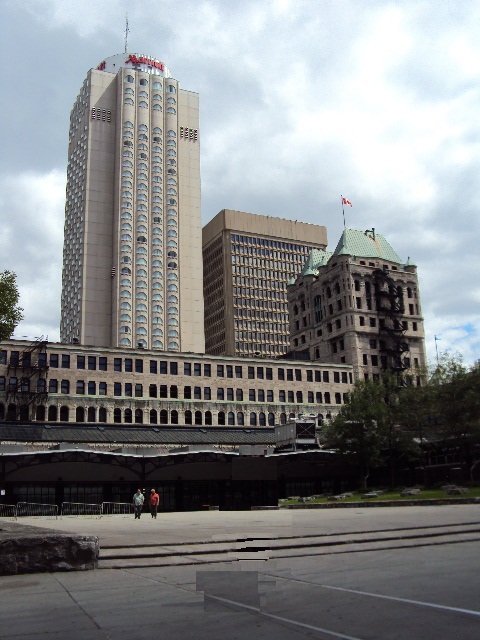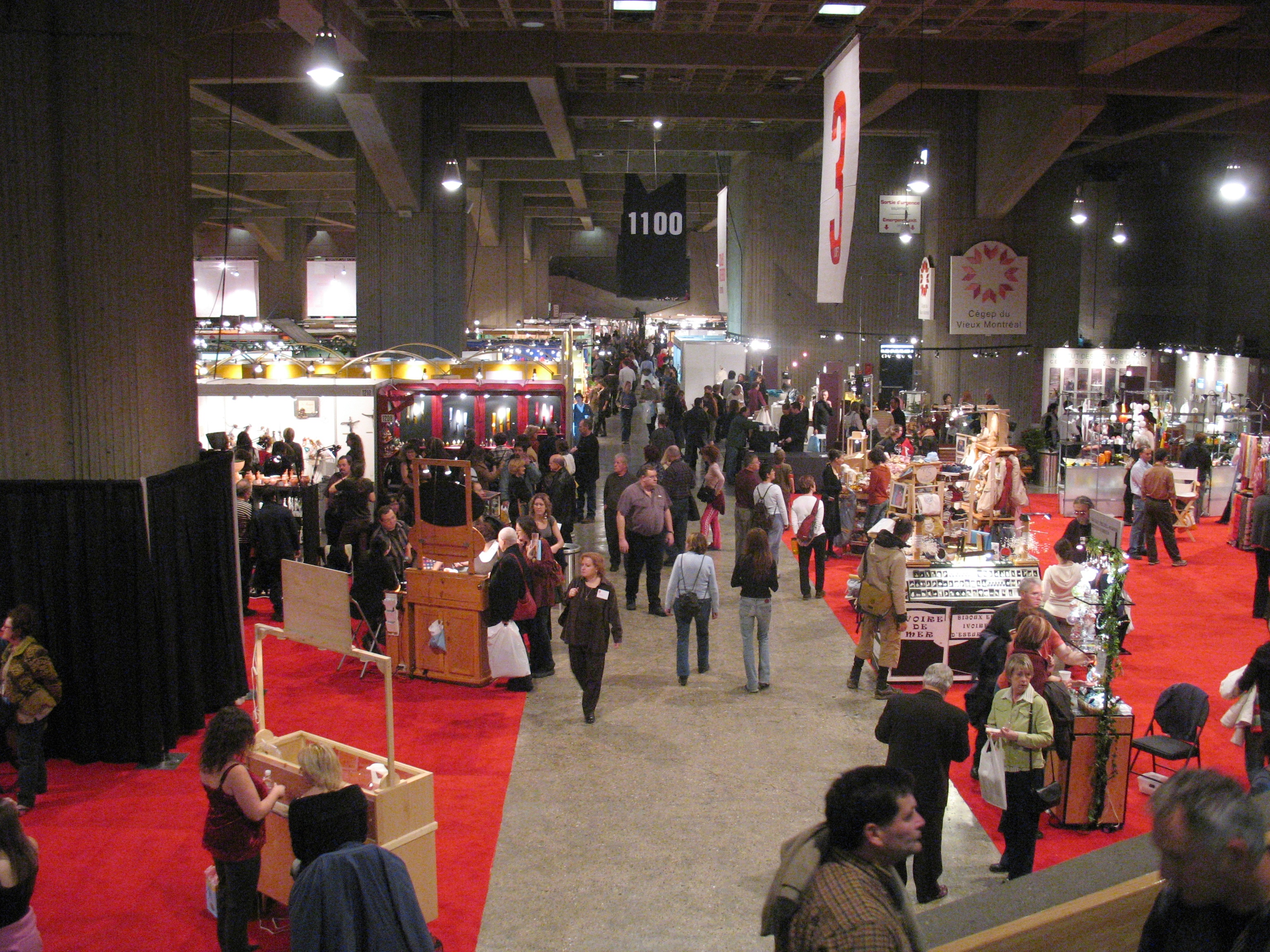|
De La Gauchetière Street
De la Gauchetiere Street (officially in french: rue De La Gauchetière) is a street in Montreal, Quebec, Canada, running through downtown Montreal, the International District and Chinatown. In Chinatown, it takes the form of a pedestrian zone, between Saint Laurent Boulevard and Jeanne Mance Street. In the block fronting the Bell Centre (between Peel Street and Mountain Street), it has been renamed ''avenue des Canadiens-de-Montréal''. Points of interest The street runs through downtown Montreal and is home to such landmarks as Place Bonaventure, the 1000 de la Gauchetière skyscraper and the Château Champlain. De la Gauchetiere also forms the southern edge of Place du Canada. Central Station, one of Montreal's two main railway stations, is located on the street. The other, Lucien L'Allier Station, is located on the short section that was renamed. The historic Windsor Station is also located on the part that was renamed, but it is no longer used for train service due t ... [...More Info...] [...Related Items...] OR: [Wikipedia] [Google] [Baidu] |
Montreal
Montreal ( ; officially Montréal, ) is the second-most populous city in Canada and most populous city in the Canadian province of Quebec. Founded in 1642 as '' Ville-Marie'', or "City of Mary", it is named after Mount Royal, the triple-peaked hill around which the early city of Ville-Marie is built. The city is centred on the Island of Montreal, which obtained its name from the same origin as the city, and a few much smaller peripheral islands, the largest of which is Île Bizard. The city is east of the national capital Ottawa, and southwest of the provincial capital, Quebec City. As of 2021, the city had a population of 1,762,949, and a metropolitan population of 4,291,732, making it the second-largest city, and second-largest metropolitan area in Canada. French is the city's official language. In 2021, it was spoken at home by 59.1% of the population and 69.2% in the Montreal Census Metropolitan Area. Overall, 85.7% of the population of the city of Montreal co ... [...More Info...] [...Related Items...] OR: [Wikipedia] [Google] [Baidu] |
1000 De La Gauchetière
1000 de la Gauchetière is a skyscraper in Montreal, Quebec, Canada. It is named for its address at 1000 De la Gauchetière Street West in the downtown core. It is Montreal's second tallest building. It rises to the maximum height approved by the city (the elevation of Mount Royal) at 205 m (673 ft) and 51 floors. A popular feature of the building is its atrium, which holds a large ice skating rink. History The building was designed by Lemay & Associates and Dimakopoulos & Associates architects, and built in 1992 at the same time as the nearby 1250 René-Lévesque which rises at 47 floors. It is an example of postmodern architecture, with a distinctive triangular copper roof as well as four copper-capped rotunda entrances at the tower base corners, which were inspired from the Mary, Queen of the World Cathedral on the north side of the building, following the trend set by Place de la Cathédrale (KPMG Tower) of Montreal skyscrapers borrowing some of their design from tha ... [...More Info...] [...Related Items...] OR: [Wikipedia] [Google] [Baidu] |
Streets In Montreal
Streets is the plural of street, a type of road. Streets or The Streets may also refer to: Music * Streets (band), a rock band fronted by Kansas vocalist Steve Walsh * ''Streets'' (punk album), a 1977 compilation album of various early UK punk bands * '' Streets...'', a 1975 album by Ralph McTell * '' Streets: A Rock Opera'', a 1991 album by Savatage * "Streets" (song) by Doja Cat, from the album ''Hot Pink'' (2019) * "Streets", a song by Avenged Sevenfold from the album ''Sounding the Seventh Trumpet'' (2001) * The Streets, alias of Mike Skinner, a British rapper * "The Streets" (song) by WC featuring Snoop Dogg and Nate Dogg, from the album ''Ghetto Heisman'' (2002) Other uses * ''Streets'' (film), a 1990 American horror film * Streets (ice cream), an Australian ice cream brand owned by Unilever * Streets (solitaire), a variant of the solitaire game Napoleon at St Helena * Tai Streets (born 1977), American football player * Will Streets John William Streets (24 March 188 ... [...More Info...] [...Related Items...] OR: [Wikipedia] [Google] [Baidu] |
Seigneurial System Of New France
The manorial system of New France, known as the seigneurial system (french: Régime seigneurial), was the semi- feudal system of land tenure used in the North American French colonial empire. Both in nominal and legal terms, all French territorial claims in North America belonged to the French king. French monarchs did not impose feudal land tenure on New France, and the king's actual attachment to these lands was virtually non-existent. Instead, landlords were allotted land holdings known as manors and presided over the French colonial agricultural system in North America. Manorial land tenure was introduced to New France in 1628 by Cardinal Richelieu. Richelieu granted the newly formed Company of One Hundred Associates all lands between the Arctic Circle to the north, Florida to the south, Lake Superior in the west, and the Atlantic Ocean in the east. In exchange for this vast land grant and the exclusive trading rights tied to it, the Company was expected to bring two t ... [...More Info...] [...Related Items...] OR: [Wikipedia] [Google] [Baidu] |
Windsor Station (Montreal)
Windsor Station (french: Gare Windsor) is a former railway station in Montreal, Quebec, Canada. It used to be the city's Canadian Pacific Railway (CPR) station, and served as the headquarters of CPR from 1889 to 1996. It is bordered by Avenue des Canadiens-de-Montréal to the north, Peel Street to the east, Saint Antoine Street to the south and the Bell Centre to the west. Windsor Station was designated a National Historic Site of Canada in 1975, and was designated a Heritage Railway Station in 1990, and a provincial historic monument in 2009. The walls are gray limestone from a quarry in Montreal. Outside, the columns reach up to wide. History In 1887, the Canadian Pacific Railway (CPR) began to build a railway station in Montreal, which would serve as its headquarters, three years after the completion of the Dalhousie Station in 1884. The Windsor Station project was entrusted to New York City architect Bruce Price, who chose a Romanesque Revival style for the building. P ... [...More Info...] [...Related Items...] OR: [Wikipedia] [Google] [Baidu] |
Lucien-L'Allier (AMT)
Lucien-L'Allier station is a commuter rail terminal in Montreal, Quebec, Canada. It is the terminal for Exo's Vaudreuil-Hudson, Saint-Jérôme, and Candiac lines. Lucien-L'Allier is in ARTM fare zone A. It is one of the two downtown terminals for Montreal commuter trains, the other being Montreal Central Station. Origin of name Lucien L'Allier station takes its name from the nearby Lucien L'Allier Montreal Metro station. This station is in turn named for rue Lucien-L'Allier, the original name of which, rue de l'Aqueduc, was changed in order to commemorate Lucien L'Allier, chief engineer for the initial network of the Montreal Metro and for the construction of Saint Helen's Island and Île Notre-Dame for Expo 67. Originally, the terminus of the commuter rail line was the monumental Windsor Station (Gare Windsor), which was also the headquarters of Canadian Pacific Railway until it moved to Calgary in 1996. This station was separated from the rails by the construction of ... [...More Info...] [...Related Items...] OR: [Wikipedia] [Google] [Baidu] |
Central Station (Montreal)
Montreal Central Station (french: Gare centrale de Montréal) is the major inter-city rail station and a major commuter rail hub in Montreal, Quebec, Canada. Nearly 11 million rail passengers use the station every year, making it the second-busiest train station in Canada, after Toronto Union Station. The main concourse occupies almost the entire block bounded by De la Gauchetière Street, Robert-Bourassa Boulevard, René Lévesque Boulevard and Mansfield Street in downtown Montreal. Its street address and principal vehicular access are on de La Gauchetière; pedestrian access is assured by numerous links through neighbouring buildings. The station is adorned with art deco bas-relief friezes on its interior and exterior. The station building and associated properties are owned by Cominar REIT as of January 2012. Homburg Invest Inc. (renamed Canmarc in September 2011) was the previous owner, since November 30, 2007. Prior to that, from the station's inception in 1943, it had b ... [...More Info...] [...Related Items...] OR: [Wikipedia] [Google] [Baidu] |
Place Du Canada
Place du Canada (part of Dominion Square until 1967) is a large urban square in downtown Montreal. Overview At it is slightly larger than the adjacent Dorchester Square, with a more varied topography due to a downward slope towards De la Gauchetière Street. Place du Canada also differs from Dorchester Square in having manicured, though densely packed, pockets of flora arranged to impede direct lines of sight and diffuse pedestrian traffic. The French term ''place'' can roughly be translated as denoting a plaza, which has a different legal definition from squares or parks in Montreal. It is open twenty-four hours per day and is bordered by René Lévesque Boulevard to the North, Peel to the East, De la Cathédrale to the West and De la Gauchetière Street to the South. History Place du Canada was developed along with the present Dorchester Square between 1872 and 1876 and was formally inaugurated that year as Dominion Square. It quickly developed into a prestige address ... [...More Info...] [...Related Items...] OR: [Wikipedia] [Google] [Baidu] |
Château Champlain
The Montreal Marriott Château Champlain Hotel, commonly known as the Château Champlain, is a historic hotel located in Montreal, Quebec, Canada, overlooking Place du Canada, at 1050 De la Gauchetière Street West. History Opened on January 11, 1967, the Château Champlain was constructed by CP Hotels to accommodate the crowds visiting Expo 67. At the time it was the tallest hotel in Canada. Canadian Pacific Railways chairman Buck Crump proposed naming the hotel after the explorer and founder of Quebec City and New France, Samuel de Champlain. Canadian Pacific sold the hotel in 1995, and it joined the Marriott hotel chain. In 2018 the hotel was purchased by the Tidan Hospitality and Real Estate Group for $65 million. Architecture The hotel stands high with 40 floors and was designed by Quebec architects Roger D'Astous and Jean-Paul Pothier. The arch-shaped windows were intended by the designers to complement the Romanesque Revival arches of nearby Windsor Station, another Ca ... [...More Info...] [...Related Items...] OR: [Wikipedia] [Google] [Baidu] |
Place Bonaventure
Place Bonaventure is an office, exhibition, and hotel complex in Downtown Montreal, Quebec, Canada, adjacent to the city's Central Station. At in size, Place Bonaventure was the second largest commercial building in the world at the time of its completion in 1967. It is one of very few buildings in Canada to have its own postal code prefix, H5A. History Place Bonaventure was first conceived as an exhibition hall, international trade centre, and hotel. The building covers an area of and is built over 18 CNR tracks leading to Central Station. Construction began in 1964, and was completed in 1967. Designed in the Brutalist style, the exterior walls are poured-in-place, ribbed sand-blasted concrete, with the interior walls sand-blasted concrete or brick. Concordia Hall was a exhibition hall. The first trade show was hosted in 1966, while the upper floors were still being constructed. Adjacent to this vast space are two large mezzanines. In 2020, it was announced that the ex ... [...More Info...] [...Related Items...] OR: [Wikipedia] [Google] [Baidu] |

.jpg)


